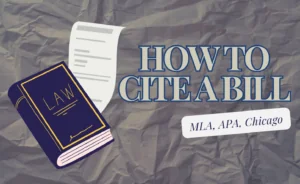Looking into Supreme Court cases may be beneficial in various fields of research. If you are a sociology student, you may need to look into court cases to prove a point about a social issue. For those studying criminology, these cases may become fundamental for driving their research further. And of course, no law student can write a paper without citing some kind of a court case. Thus, we decided to help all of you out and collect all the rules for citing and referencing Supreme Court cases in this single guide.

✅ AI Essay Writer ✅ AI Detector ✅ Plagchecker ✅ Paraphraser
✅ Summarizer ✅ Citation Generator
Citing Cases from Supreme Court: What Details Do You Need to Know?
Before adding any case to your list of sources, you should know the general citation rules used for this type of reference. The typical format includes the case name, volume number, reporter abbreviation, first page of the case, and the year of the decision. For example, a citation might look like
Brown v. Board of Educ., 347 U.S. 483 (1954).
If you decide to ask the Internet how you should cite Supreme Court cases, you will see that the main formatting used to do this is Bluebook. However, sometimes you may also apply APA style to these references. The main difference is that in APA style, the case name is italicized in the text, but not in the reference list.
You should also note that the Bluebook provides a more detailed guide for legal citations, including abbreviations and specific formatting rules. And, keep in mind that the court name is usually omitted in such citations for Supreme Court cases, as the reporter’s name indicates the court level. The last key point that you need to be sure to follow is to use the correct typeface, spacing, and indentation as specified by the citation style you’re using. Now, let’s move on to looking at the Bluebook and APA rules for citing cases from the Supreme Court.
Bluebook Rules for Citing Cases from Supreme Court
The Bluebook is a citation style and guide for referencing legal documents in the U.S. According to Bluebook Rule 10, a typical citation includes:
- the case name (italicized or underscored)
- the volume number
- the reporter abbreviation
- the first page of the case
- the specific page for the cited material
- and (the court abbreviation and date in parentheses).

Note that we didn’t include the court abbreviation here. That’s because as there’s only one U.S. Supreme Court, the name of the court in the citation is not needed.
Yet Unpublished Cases
Suppose a case hasn’t been published in the United States Reports yet. In that case, it’s cited from an unofficial reporter like the Supreme Court Reporter (S. Ct.) or the United States Supreme Court Reports, Lawyers’ Edition (L. Ed. or L. Ed. 2d).

It is preferred that you use the Supreme Court Reporter over the Lawyers’ Edition when the case is not yet in the United States Reports.
APA Citation Style for Court Cases
In APA citation style, Supreme Court cases are cited differently than other sources. The citation format includes the case name, volume number, abbreviated reporter name, page number, and year. You should note here, that the case name is italicized in the in-text citation but not in the reference list. Below we will include an example.

Abbreviations
Abbreviations in legal citations in APA are very common, and it’s important to apply them properly. They are used to make the references more clear and concise. When citing the U.S. Supreme Court, the abbreviation “U.S.” is used for the United States Reports (as you may see in our example as well), the official reporter, and there’s no need to specify the court level in the citation since the reporter’s name indicates it. Additionally, the shortened “v.” (for “versus”) can be typically used between the names of the parties in a case title. In any case, it is always a great idea to consult resources or online case information first, to make sure you use correct abbreviations and citation format.
Why & When Would You Need to Cite a Supreme Court Case
You may still think that citing a Supreme Court case is a task reserved mostly for lawyers and legal scholars. On the contrary, it is actually something you might encounter more often than you’d think, especially as a student.
Whether you’re writing a research paper, engaging in a debate, or analyzing a historical event, referencing a Supreme Court case can provide thorough support for your arguments. These cases are the highest form of legal precedent in the United States, and they often address fundamental issues like civil rights, privacy, and government power. By citing them, you:
- back up your points with authoritative sources
- demonstrate a deep understanding of the topic.
More specifically, it’s important when you’re discussing issues related to law, politics, or social justice, as Supreme Court decisions often shape the legal landscape and societal norms. Plus, accurately citing these cases shows your attention to detail and commitment to academic integrity, which are key qualities in any scholarly work. So, next time you’re researching a topic that touches on legal matters, remember that referencing a Supreme Court case could be your ticket to a more compelling and credible argument.
Remember that our Citation Generator is here to help you with this challenging process. It will quickly and easily generate properly structured academic citations at your request.
FAQ
Follow us on Reddit for more insights and updates.





Comments (0)
Welcome to A*Help comments!
We’re all about debate and discussion at A*Help.
We value the diverse opinions of users, so you may find points of view that you don’t agree with. And that’s cool. However, there are certain things we’re not OK with: attempts to manipulate our data in any way, for example, or the posting of discriminative, offensive, hateful, or disparaging material.